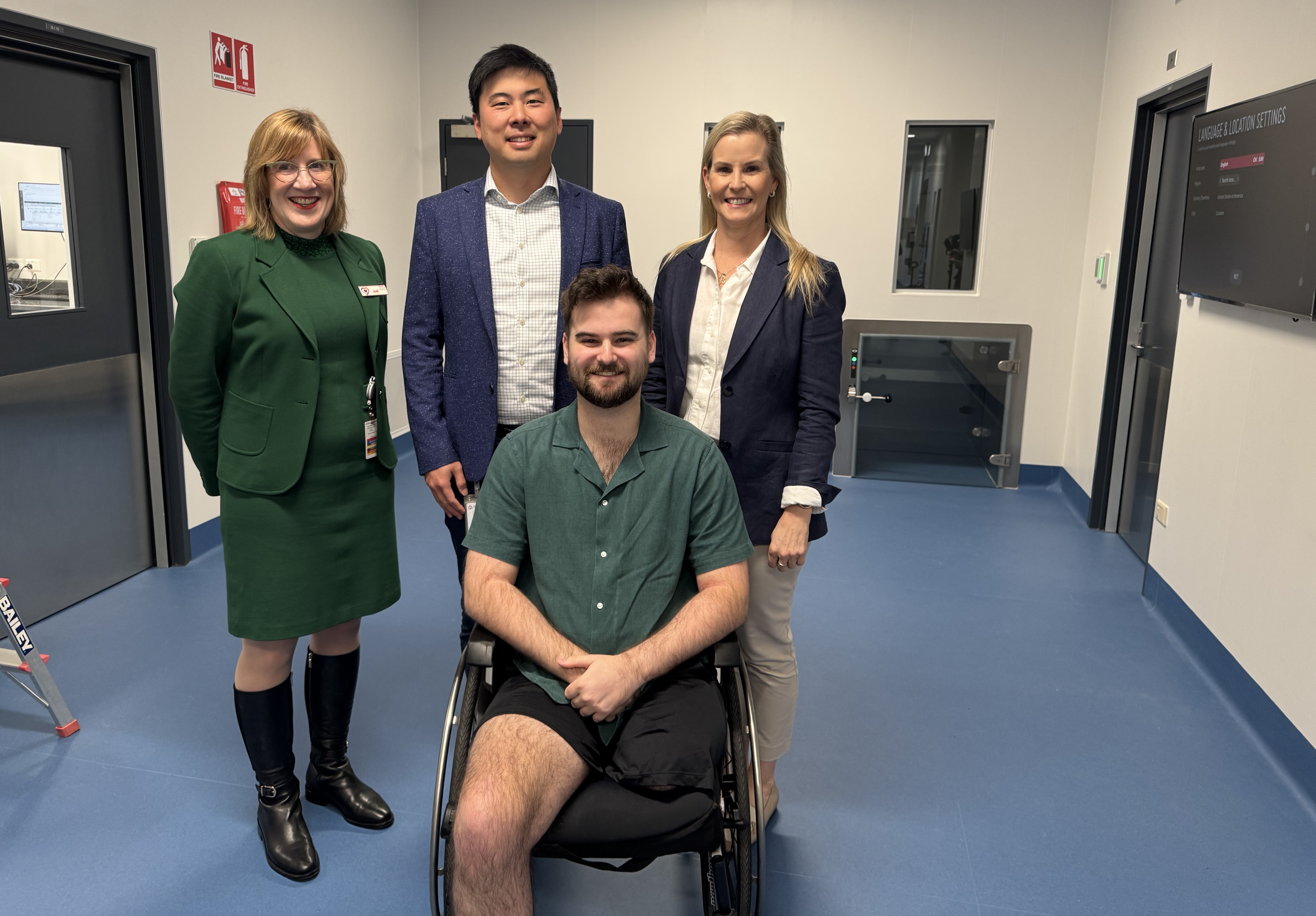Cyclotron to supercharge WA's cancer-fighting capacity
 Jodi Graham, Dr Brandon Lau and patient Ben Oates with his mum Kim Double.
Jodi Graham, Dr Brandon Lau and patient Ben Oates with his mum Kim Double.
The Radiopharmaceutical Production and Development (RAPID) Laboratories and Cyclotron Project was recently viewed by the Minister for Health Infrastructure John Carey MLA and Minister for Health Meredith Hammat MLA.
The new facilities, set to open this year at Sir Charles Gairdner Hospital, will allow more patients with cancer, neurological, heart and other conditions to be diagnosed and monitored.
Dr Jodi Graham Executive Director Sir Charles Gairdner Osborne Park Health Care Group said the new cyclotron and laboratories will greatly support Western Australian's private and public imaging needs while also supporting research into new cancer treatments.
"The new laboratories are a game changer, giving us the opportunity to produce radiopharmaceuticals which are administered to patients with cancer, neurological, heart and other conditions," she said.
"It has the potential to triple the capacity to provide PET scans, improving overall health outcomes for Western Australians with cancer."
The project includes state-of-the-art laboratories and a second cyclotron machine, providing improved access to radiopharmaceutical products, which are administered to patients with cancer, neurological, heart and other conditions undergoing positron emission tomography (PET) imaging.
PET imaging is critical to both diagnose and monitor treatment response and disease progression. Unlike other scans, which only show the structure of a body, a PET image shows how the body is working. They provide greater sensitivity and accuracy to diagnose and map cancers.
One person who has benefits from PET images is 22-year-old cancer patient Ben Oates, who has had two amputations and 42 rounds of chemotherapy over the past few years. He and his mum Kym continue to rely on the technology to pinpoint any sinister growth.
The radioactive dye created by the cyclotron is able to highlight cancer cells in a patient with PET imaging critical to both diagnose and monitor disease progression.
There has been a significant increase in the demand for radiopharmaceuticals used in cancer diagnosis in Western Australia due to the accuracy of this technology and a growing population.
Sir Charles Gairdner Hospital was chosen to house WA’s second cyclotron, as it has the highest concentration of PET cameras, making it the ideal location for the State-wide distribution of these time-critical products.
The State Government collaborated with the Federal Government’s National Collaborative Research Infrastructure Strategy and other organisations to complete the project.
The project also received $1.77 million towards the expansion of the RAPID facilities from the National Imaging Facility (NIF), The University of Western Australia and several philanthropic partners.
The purpose-built facility aims to provide key infrastructure to support important research into novel therapies.

